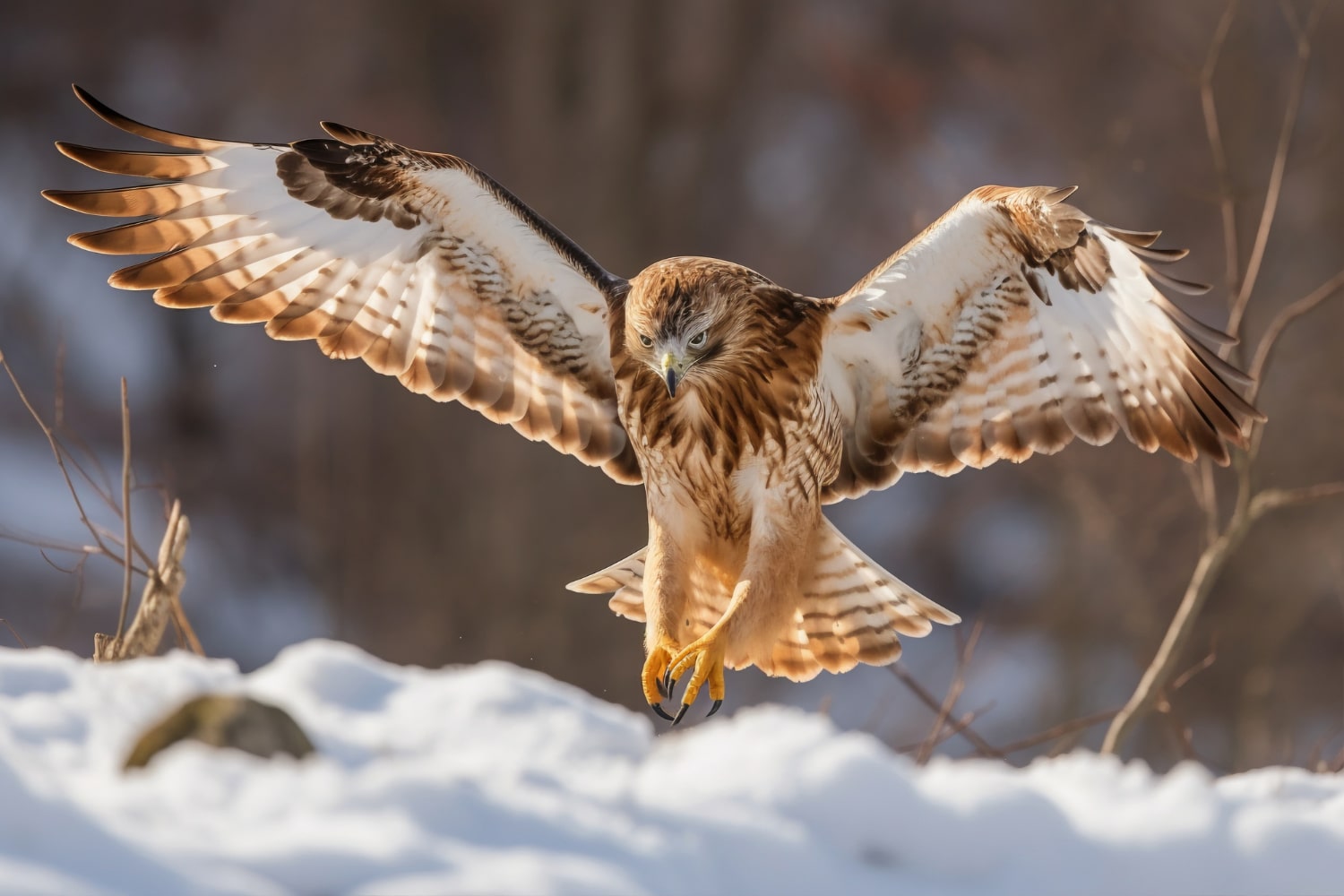Hawks are among the most agile and intelligent birds of prey, known for their incredible speed, sharp vision, and expert hunting skills. They are found on every continent except Antarctica and have adapted to a wide variety of habitats, from dense forests to open plains. In many cultures, the hawk symbolizes strength, vigilance, and freedom. However, these birds are remarkable not only for their appearance but also for their unique biological and behavioral traits. Here is a collection of fascinating and educational facts about hawks that you may not have known.
- Hawks belong to the family Accipitridae and include more than 250 species. This group ranges from small to large raptors, with some species having wingspans exceeding one meter. Well-known examples include the goshawk and the sharp-shinned hawk.
- Hawks have incredibly sharp eyesight, which allows them to spot prey from great distances. Their vision is several times sharper than that of humans, and they can detect moving objects from up to two kilometers away. This keen eyesight is one reason they are such effective hunters.
- Some species of hawks are among the fastest birds in the world. For example, the peregrine falcon, often grouped with hawks, can dive at speeds exceeding 300 kilometers per hour. This makes it the fastest animal on Earth when in flight.
- Hawks are equipped with strong legs and sharp talons, which they use to capture and kill their prey. Their grip is powerful enough to break bones with a single squeeze. These talons are one of their most important hunting tools.
- They typically build their nests high in trees or on rocky ledges. Many hawks reuse the same nest year after year, reinforcing it each season. Females lay between two and five eggs, and both parents take part in feeding and raising the chicks.
- Hawks are monogamous and often mate for life. During courtship, the male performs aerial displays and acrobatics to attract the female. These flight rituals play an essential role in forming and maintaining the pair bond.
- In many hawk species, the female is significantly larger than the male. This size difference helps reduce competition for food between the pair. Females usually hunt larger prey, while males go after smaller animals.
- Hawks are highly adaptable and can live in urban areas, including large cities. They often nest on tall buildings and bridges and hunt pigeons and other urban birds. Their presence helps control pest populations in cities.
- In various mythologies, hawks represent warfare, insight, and nobility. In ancient Egypt, the god Horus was depicted with a hawk’s head, symbolizing kingship and the sky. In Celtic tradition, hawks were seen as spiritual guides.
- In medieval Europe, hawks were widely used in falconry, a prestigious practice that involved training birds of prey for hunting. Falcons and hawks that responded well to training were especially prized. Falconry was not only a sport but also a symbol of social status.
- Hawks have exceptional coordination and agility. They can swiftly change direction mid-flight without losing speed. This allows them to hunt effectively even in complex environments like forests or urban areas.
- Their diet varies greatly depending on species and habitat. Some hawks specialize in hunting birds, others in small mammals, while some may catch fish or reptiles. Their feeding habits are flexible and often change with the seasons.
- Hawks play an important ecological role by controlling populations of small animals. Without predators like hawks, rodents and other prey species could overpopulate, disturbing the natural balance. They act as vital regulators in ecosystems.
- Certain hawk species are threatened due to habitat loss, pesticide poisoning, and illegal hunting. Many are now protected by law and listed in conservation programs. Reintroduction efforts are underway in several regions to rebuild their numbers.
- A hawk’s beak is hooked and sharp, ideal for tearing flesh. Some species also have tooth-like projections that help them quickly kill their prey by breaking the neck. Their beak design is a key adaptation for survival.
- Hawks have loud and piercing calls that can be heard from long distances. They use vocalizations to communicate with mates, defend territory, or signal danger. During breeding season, their calls become more frequent and intense.
- In some cultures, hawks are seen as totem animals that symbolize intuition, clarity, and focus. People believe they represent insight and the ability to see the truth. Hawk imagery appears in literature, heraldry, and martial arts symbolism.
- Many hawks undertake long-distance migrations, traveling thousands of kilometers between nesting and wintering grounds. They navigate using the sun, Earth’s magnetic field, and landscape features. These migrations are studied in ornithology for their precision.
- In modern science, hawks are used to study aerodynamics, vision, and spatial orientation. Their flight mechanics have inspired the design of drones and aircraft. The structure of their eyes is examined to improve optical technologies.
Hawks are not just predators but extraordinary creatures that combine power, elegance, and intelligence. These interesting facts offer deeper insight into their role in nature, culture, and science. You may not have known how truly exceptional these birds are in every aspect of their existence. Fascinating facts about hawks invite us to explore and appreciate the complexity and beauty of the natural world.





